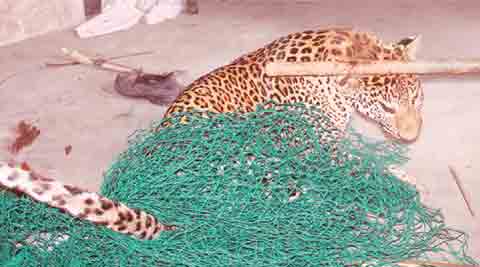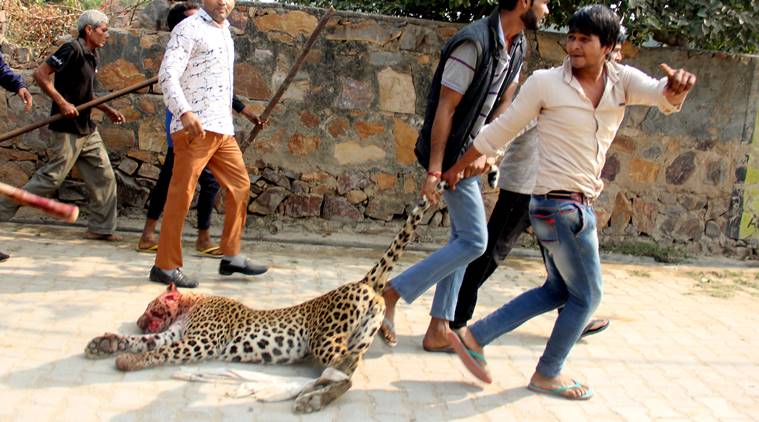Opinion Spotted a leopard? Back off, stay calm, let it slip away
Leopards traditionally live close to people and just because one is sighted does not mean the animal means harm.

 A leopard entered the village Mandawar near Sohna on Thursday early morning injuring several villagers before it was killed in Gurgaon. Photo by Manoj Kumar
A leopard entered the village Mandawar near Sohna on Thursday early morning injuring several villagers before it was killed in Gurgaon. Photo by Manoj Kumar
Yet again, a leopard was lynched. This time in Haryana’s Sohna. While frowning on the beastly act of the mob, the media, without exception, described the animal as one that strayed from its natural habitat. Some even rationalised the violence as a result of the inability of the police and wildlife forces to take timely action in a situation of man-animal conflict.
The real problem is with this perception. Leopards do not visit people looking for food because there is a prey crunch in the forest. And they certainly do not stray. Unlike tigers, many leopards are fringe-forest animals. They live near human habitations, use secondary village forests or even suitable cropland as cover during the day, and walk the human neighbourhoods in the vicinity after sundown. They opportunistically prey on small livestock. And they take dogs, domestic or pariah, their favourite prey. There is no dog in the forest.
Like that, over centuries, leopards have adapted to survive next to people without major conflict. If you happen to spot a leopard in the cropland of your village, like some did in Sohna yesterday, chances are that the animal — and generations before her — has always been using that cropland without ever blowing their cover. And without ever harming people.
 (Source: Photo by Manoj Kumar)
(Source: Photo by Manoj Kumar)
Now just because it is sighted does not mean that the animal means harm. Of course, both sides will panic in such a situation. Panic triggers two responses: fight or flee. If the leopard gets surrounded by a crowd before it can run away and disappear, which is the case most often, it will attack. There will be human injuries, often grievous but rarely fatal, with the predictable climax in a mob-versus-one.
The one and only rule to avoid conflict in such situations is to give the cat space and let it slip away. Don’t create a ruckus and never crowd around the animal blocking its escape routes. Instead of depending solely on tranquillising guns, nets and cages — which become necessary in tricky conditions — cops, wildlife personnel, volunteer groups and community leaders can help avoid injuries and save lives by following this simple protocol as the primary response.
Letting the wild be is a time-tested strategy. There is no excuse, other than our increasing sense of insecurity, for abandoning it.



